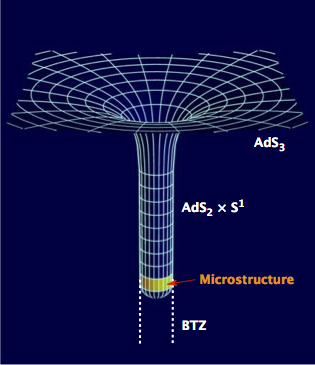
String theory is a quantum theory of gravity, and has had several astounding successes in describing properties of black holes. Recent progress in string theory points to the possibility that black holes should not be thought of as fundamental objects, but rather as statistical descriptions of a huge number of smooth horizonless microstate geometries, or fuzzballs. If correct, this “fuzzball proposal” will revolutionize our understanding of black holes and quantum gravity in general: the classical black hole solution would be like the analogue of the thermodynamic description of a gas, while the horizonless microstates would be the analogue of the statistical description of this gas. It could also have experimental consequences that would be visible with gravitational wave detectors.
David Turton, Iosif Bena and their collaborators in the US, UK and Japan have succeeded to construct the first family of horizonless solutions that have the same conserved charges as supersymmetric rotating black holes with arbitrarily small angular momentum, which was an open problem in the field for more than ten years. These geometries are well-approximated by the black-hole solution, but start differing from it in the near-horizon limit, where the black-hole singularity is resolved into a smooth cap. They have also shown using the AdS-CFT correspondence that these solutions are dual to some of the microstates of the black hole that contribute to the entropy, which strongly supports the idea that the fuzzball proposal is a correct description of all such black holes.
[1] I. Bena et al, Smooth horizonless geometries deep inside the black-hole regime, Phys. Rev. Lett. 117, 201601 (2016)

